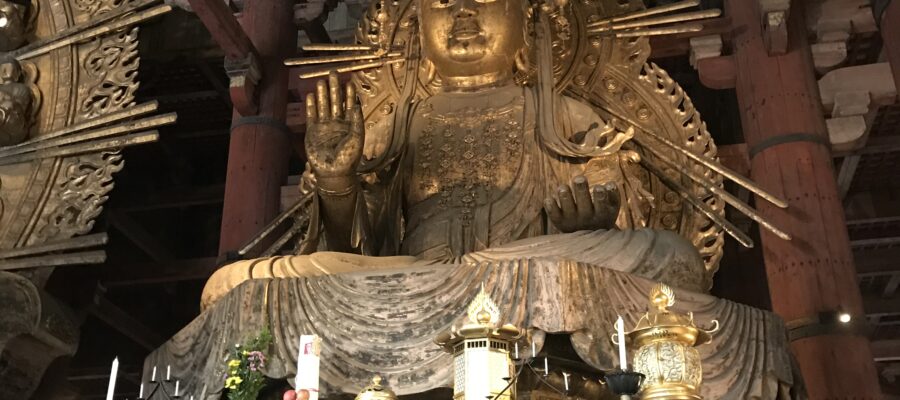大仏さんの左右の仏様
東大寺大仏殿に鎮座しているのは廬舎那仏である大仏様だけではありません。大仏さんに圧倒されるので、そのほかに何を見たか覚えていない参拝客も多いと思います。私も何回か通う内に一体、一体をよく鑑賞するようになり、それぞれの良さを感じるようになりました。まず、大仏様の両脇に控えているのは、向かって左が虚空蔵菩薩で、右側が如意輪観音です。大きさやスタイルが同じようなので、どっちがどっちか記憶に残ることは少ないかと思いますが、それぞれよく見ると、立派な仏像です。
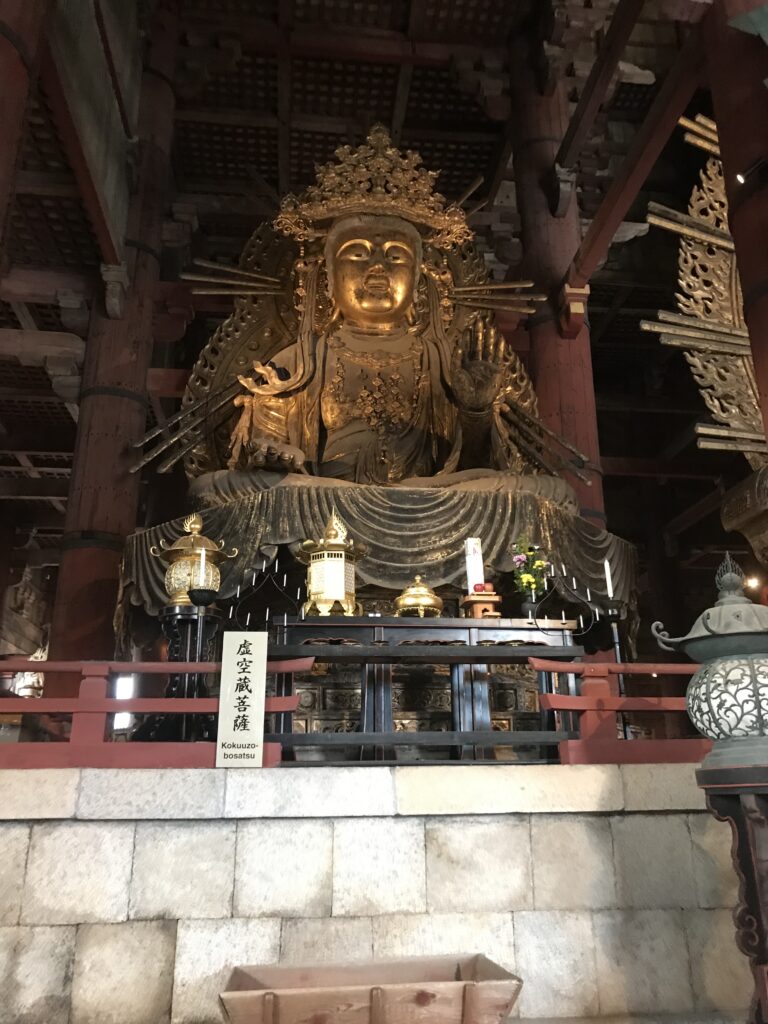
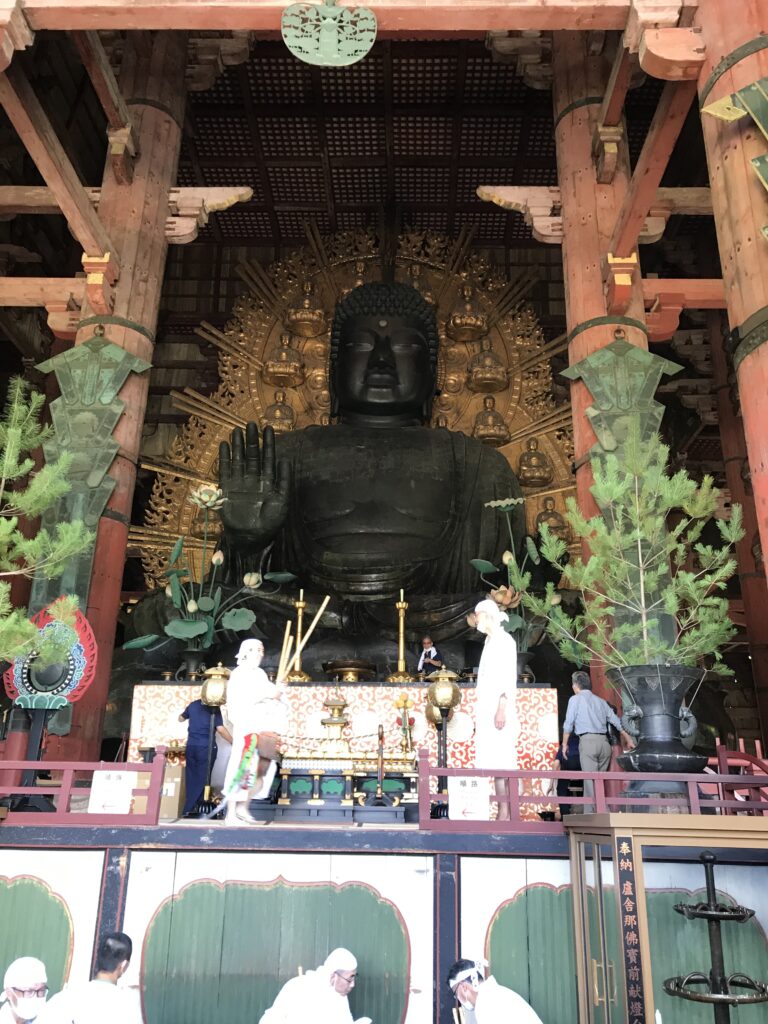
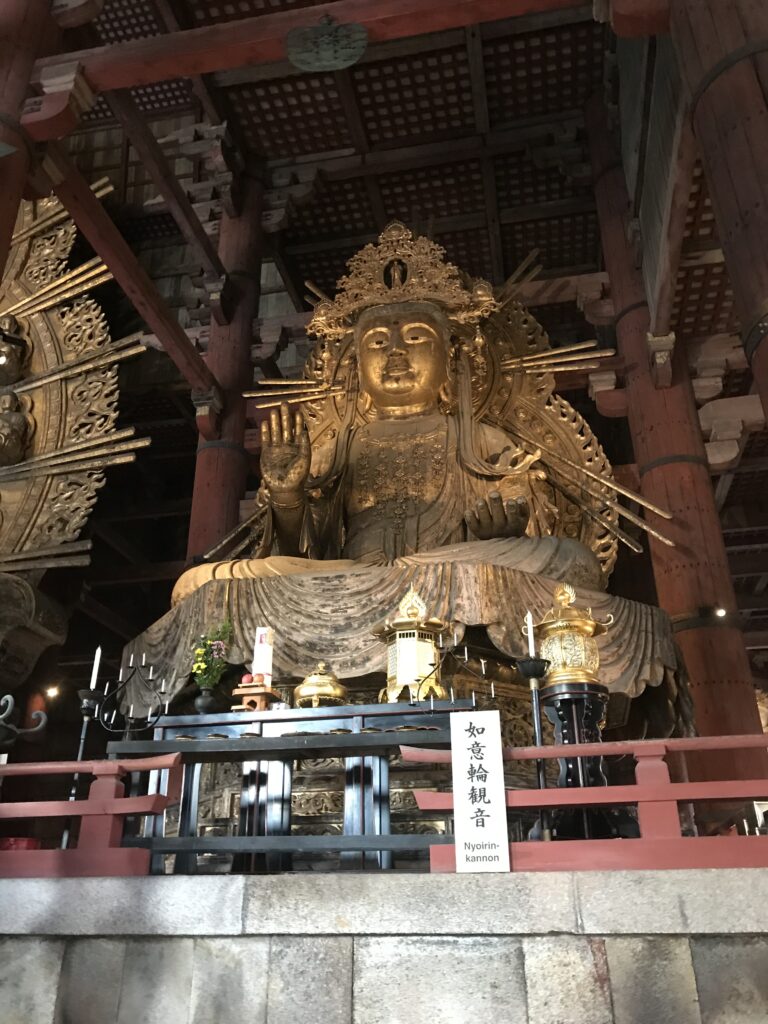
2体しかいない四天王像
そして大仏様の後方には四天王像の内、左後ろには広目天、右後ろには多聞天の像が立っています。倒壊しないように後部を支えられています。それぞれ迫力があり、邪鬼を払うにはもってこいの表情と姿勢をしています。
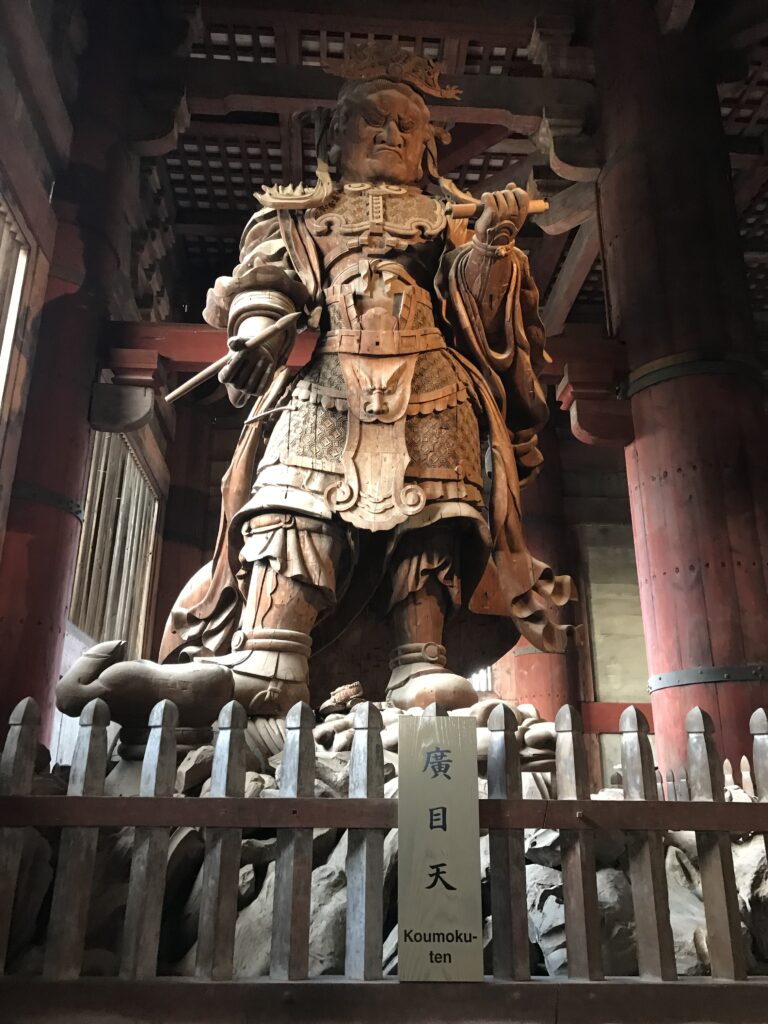

残念なことに、四天王の内、最後まで完成したのは広目天と多聞天だけで、残りの2体は経済的な事情なのか、頭像だけが大仏殿内に展示されています。間近で顔を拝めるので、これはこれでいいかなとも思いますが、4体揃った姿をいつか見てみたいとも思います。
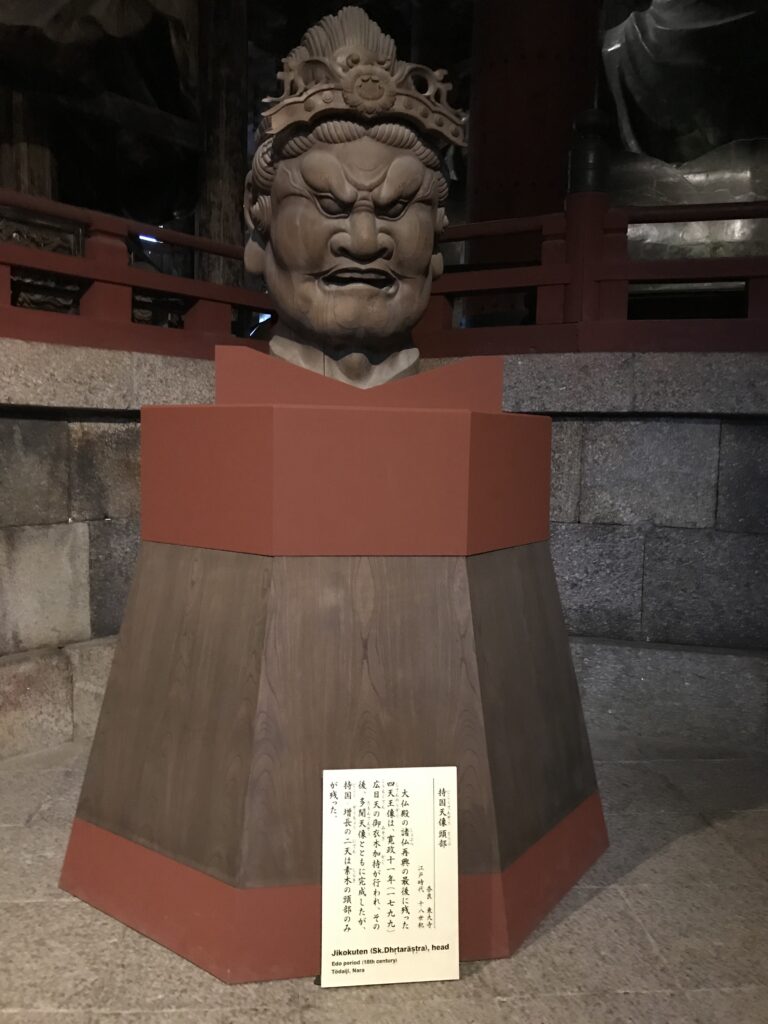
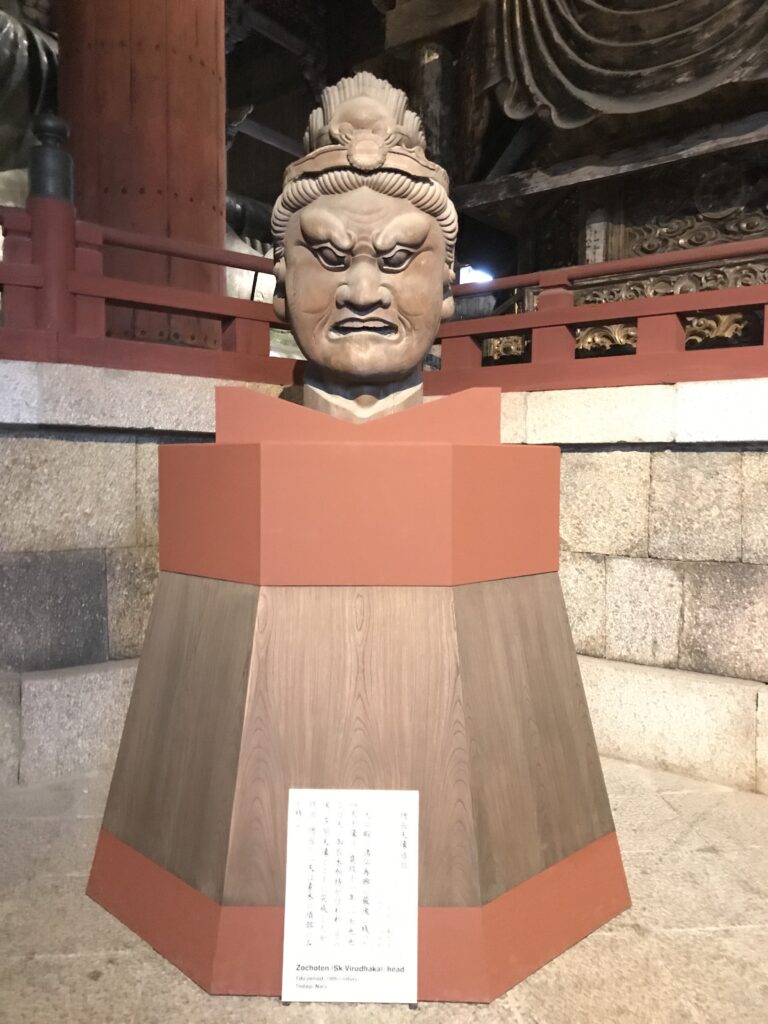
大仏さんの光背にも化仏がいっぱい
これで終わりではありません。大仏様の光背には、化仏(けぶつ)と呼ばれる小さな仏様が左右に8個ずつ、計16体くっついています。大仏様が忙しいので、その代わりに化仏たちが我々人間を救いに来てくれると聞いたことがあります。
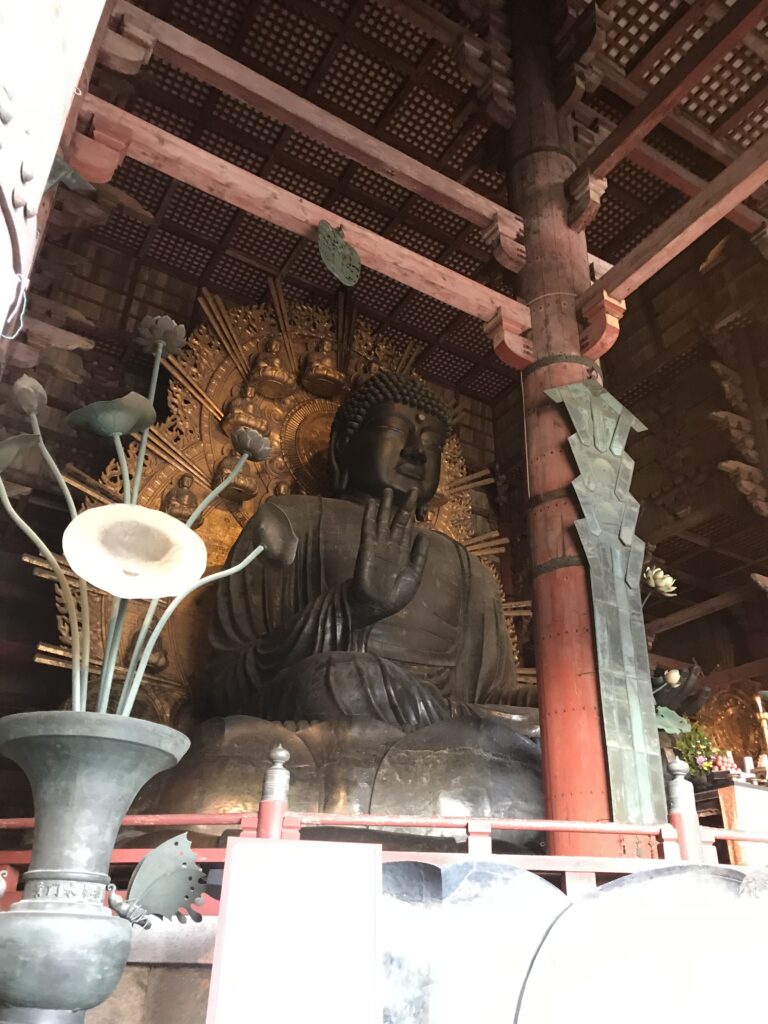
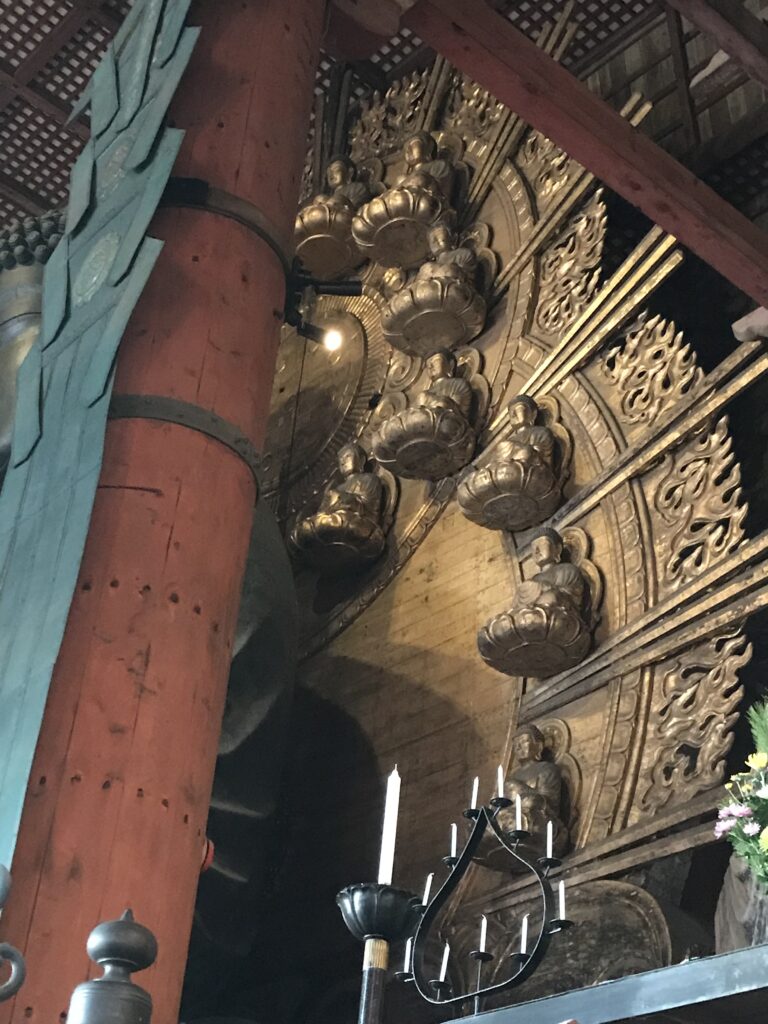
かつてのシビも展示されています
大仏殿内には仏像以外にも、明治の修理から60年以上、大仏殿の屋根の上で輝いていたシビが置いてあります。高さ3.3mで非常に大きなものです。シビにはいろいろ由緒がありますが、通訳ガイドの皆さんは、これは魚の尾を象っていて、魚は水の中にいるため、シビの下は水中であり、火災から建物を守るためのおまじないと説明する方もいらっしゃいます。まあ、現代ではシビだけでは心もとないので、このブログの東大寺③大仏殿でもレポートしたように、大仏殿の屋根の上から水が放出されるように消火設備が整えられています。(完)
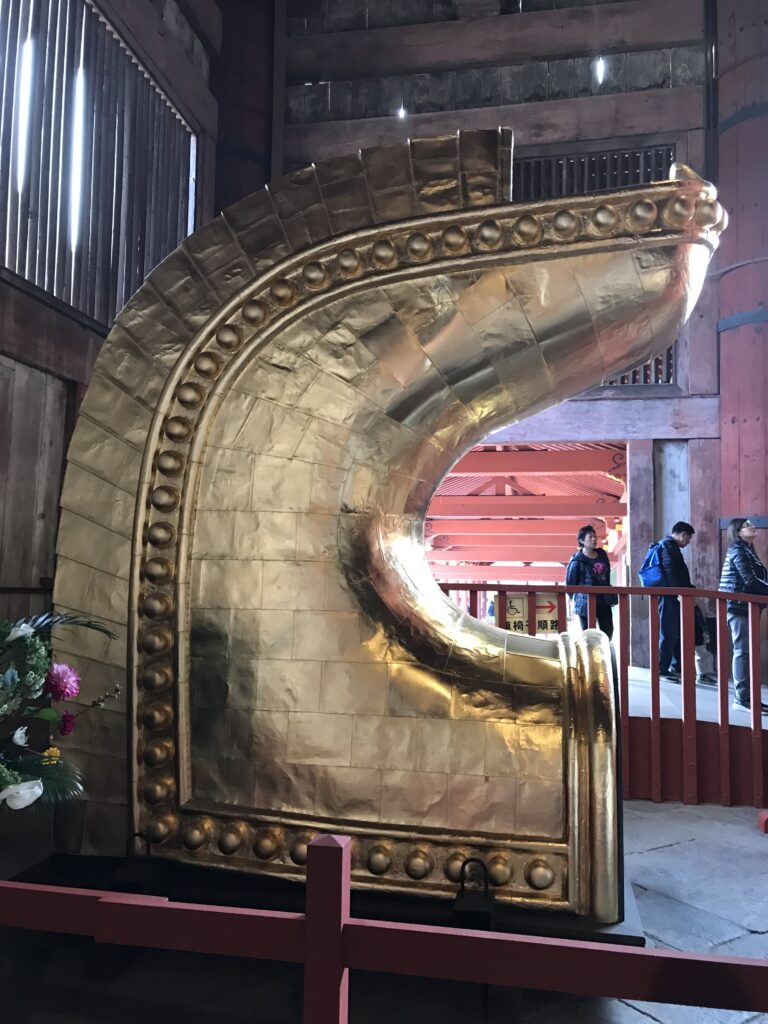
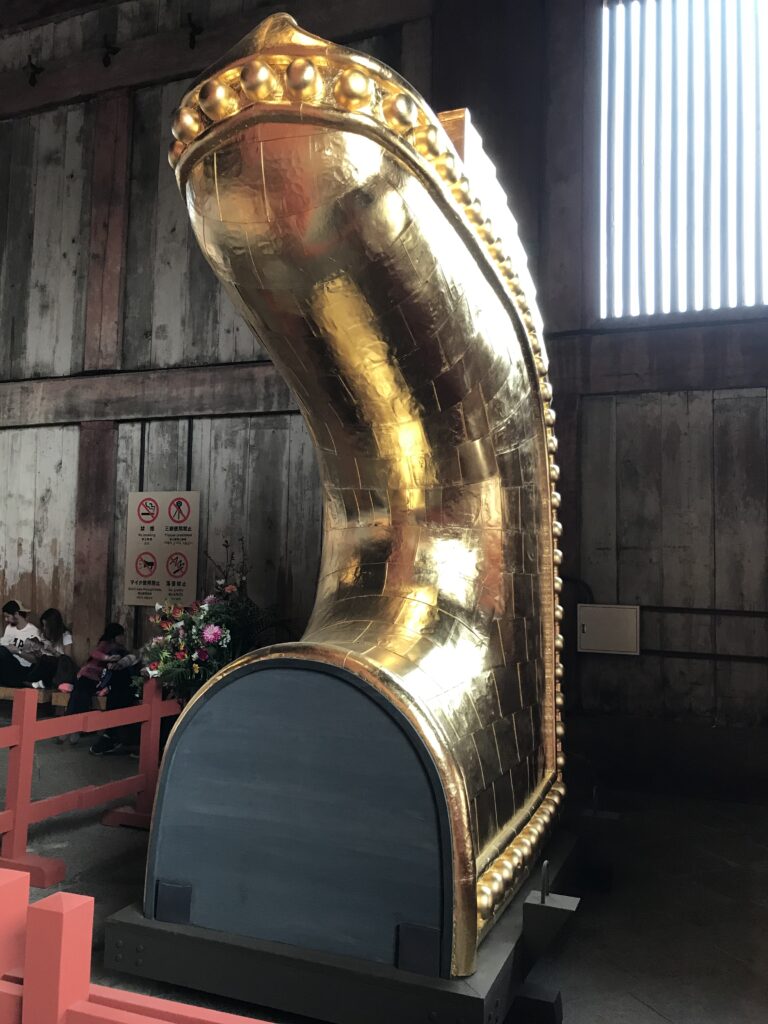
東大寺が紹介されている書籍
仏像の復習には「みるみるつながる仏像図鑑」がおすすめです。
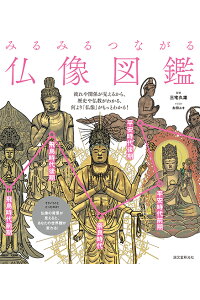
みるみるつながる仏像図鑑 流れや関係が見えるから、歴史や仏教がわかる、何より「仏像」がもっとわかる! [ 三宅 久雄 ]
価格:1,760円
(2021/9/11 11:28時点)
感想(0件)
Todaiji Temple (5) Buddha statues in the Great Buddha Hall (English)
Buddhas on either side of the Great Buddha
The Great Buddha, Lushanabutsu, is not the only Buddha that resides in Todaiji’s Great Buddha Hall. There are many visitors who are so overwhelmed by the Great Buddha that they cannot remember what else they have seen. As I have visited the temple several times, I have come to appreciate each and every part of the temple, and I have come to feel the merits of each one. First of all, the two statues on either side of the Great Buddha are the Void Goddess on the left and the Nioirin Kannon on the right. Since they are similar in size and style, it may not be easy to remember which is which, but if you look closely at each of them, they are magnificent Buddhist statues.
There are only two statues of the Four Heavenly Kings.
And behind the Great Buddha stands the statues of the Four Heavenly Kings, Komokuten on the back left and Tamonten on the back right. The back of the statues are supported to prevent them from collapsing. Each of these statues is powerful and has the perfect expression and posture to ward off evils.
Unfortunately, of the four heavenly kings, only Komokuten and Tamonten were completed until the end of the making, and only the head statues of the other two are on display in the Great Buddha Hall, perhaps due to economic reasons. I think this is good because I can see their faces up close, but I would like to see all four of them together someday.
The halo of the Great Buddha is also full of Buddha incarnations.
This is not the end of the story. On the halo of the Great Buddha, there are 16 small Buddhas called “Kebutsu”, 8 on each side. I’ve heard that since the Great Buddha is busy, the Kebutsu come to save us humans instead.
Former “Shibis” are also on display.
Inside the Great Buddha Hall, in addition to the Buddha statue, there is also a shibi, which has been shining on the roof of the Great Buddha Hall for over 60 years since its repair in the Meiji era. At 3.3 meters high, it is a very large statue. There are many legends behind the shibi, but some interpreter guides explain that it represents the tail of a fish, and since fish are in water, the shibi is underwater, and it is a spell to protect the building from fire. Well, in modern times, shibbi alone is not enough to protect a building from fire, so as reported in this blog on Todaiji Temple (3) Great Buddha Hall, a fire extinguishing system has been set up to release water from the roof of the Great Buddha Hall. (End)
Temple Todaiji (5) Statues de Bouddha dans la salle du Grand Bouddha (Français)
Bouddhas de part et d’autre du Grand Bouddha
Le Grand Bouddha, Lushanabutsu, n’est pas le seul Bouddha qui réside dans la salle du Grand Bouddha de Todaiji. De nombreux visiteurs sont tellement subjugués par le Grand Bouddha qu’ils ne se souviennent plus de ce qu’ils ont vu d’autre. Après avoir visité le temple plusieurs fois, j’en suis venu à apprécier chaque partie du temple et à ressentir les mérites de chacune d’entre elles. Tout d’abord, les deux statues situées de part et d’autre du Grand Bouddha sont la Déesse du Vide à gauche et la Nioirin Kannon à droite. Comme elles sont de taille et de style similaires, il n’est peut-être pas facile de se rappeler laquelle est laquelle, mais si vous regardez attentivement chacune d’elles, ce sont de magnifiques statues bouddhistes.
Il n’y a que deux statues des quatre rois célestes.
Et derrière le Grand Bouddha se dressent les statues des quatre rois célestes, Komokuten à l’arrière gauche et Tamonten à l’arrière droit. L’arrière des statues est soutenu pour éviter qu’elles ne s’effondrent. Chacune de ces statues est puissante et a l’expression et la posture parfaites pour éloigner les maux.
Malheureusement, des quatre rois célestes, seuls Komokuten et Tamonten ont été achevés jusqu’à la fin de la fabrication, et seules les statues de tête des deux autres sont exposées dans la salle du Grand Bouddha, peut-être pour des raisons économiques. Je pense que c’est une bonne chose car je peux voir leurs visages de près, mais j’aimerais bien les voir tous les quatre ensemble un jour.
Le halo du Grand Bouddha est également rempli d’incarnations de Bouddha.
Ce n’est pas la fin de l’histoire. Sur l’auréole du Grand Bouddha, il y a 16 petits bouddhas appelés “Kebutsu”, 8 de chaque côté. J’ai entendu dire que puisque le Grand Bouddha est occupé, les Kebutsu viennent nous sauver, nous les humains, à la place.
D’anciens “shibis” sont également exposés.
À l’intérieur de la salle du Grand Bouddha, outre la statue de Bouddha, on trouve également un shibi, qui brille sur le toit de la salle du Grand Bouddha depuis plus de 60 ans, depuis sa réparation à l’ère Meiji. Avec ses 3,3 mètres de haut, c’est une très grande statue. Il existe de nombreuses légendes derrière le shibi, mais certains guides interprètes expliquent qu’il représente la queue d’un poisson, et comme les poissons sont dans l’eau, le shibi est sous l’eau, et c’est un sort pour protéger le bâtiment du feu. Eh bien, à l’époque moderne, le shibbi seul ne suffit pas à protéger un bâtiment contre le feu, donc comme indiqué dans ce blog sur le temple Todaiji (3) Great Buddha Hall, un système d’extinction d’incendie a été mis en place pour libérer l’eau du toit du Great Buddha Hall. (Fin)
